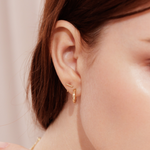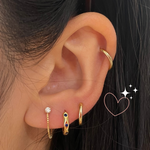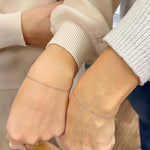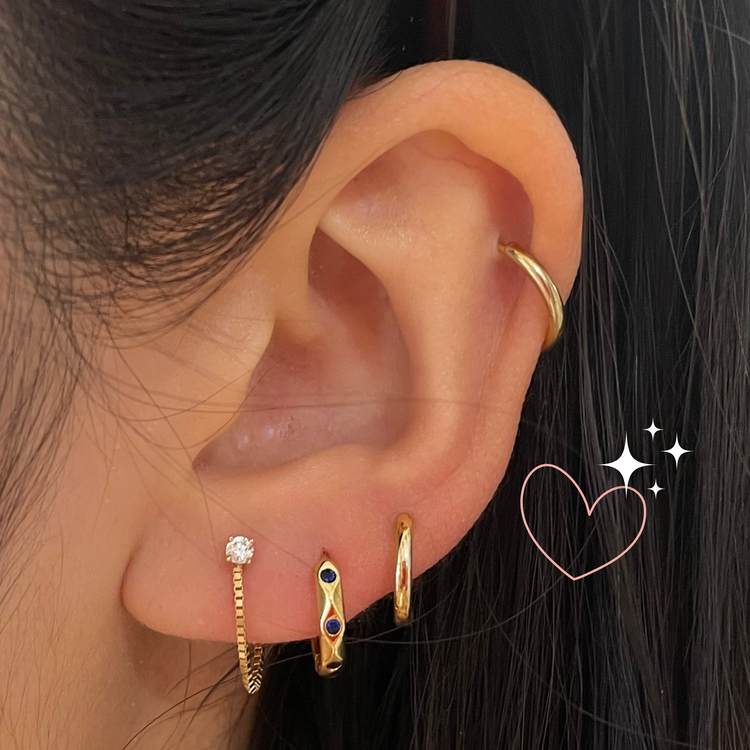blogs/jewelry-care-and-maintenance
JEWELRY CARE
Your favorite jewelry spends a lot of time with you. Sometimes, a little too much time. Did you forget to take it off during your brief ocean swim (I did last weekend!)? Or, more likely, during your evening shower? Or during your workout? Or when you went to bed last night?
We all do it. But what happens when our cherished piece is neglected in these ways? Solid gold and silver can hold up pretty well, but if its plated or filled, which it often is, the piece is destroyed little by little.
Instead of accidentally destroying your favorite sidekick, learn to protect it. We asked our production team (they’re the ones who make all of our handmade jewelry!) to share pro tips on how to properly care for your jewelry.
The BasicsMost metals, including gold- and silver-plated jewelry, gunmetal, and bronze, among others, are combinations of other metals. Only solid gold or sterling silver is pure, unmixed metals. Most trendy, cute, budget-friendly jewelry is made from mixed metals, while heirloom-quality jewelry is more frequently made from pure metals.
Filled JewelryGold-filled pieces include a layer of gold, and although it varies depending on the manufacturer, it is always significantly thicker than what you’ll find in gold-plated jewelry. Don’t worry; we’ll explain that in a second! Gold-filled accessories can be worn daily without fear of fading or rubbing off. In many cases, they can be worn for years...like 30 years! That said, we still recommend you follow proper care instructions to help extend the life of your piece.
Plated JewelryGold-plated jewelry is made by using electricity or chemicals to deposit and bond a very thin layer of gold over another metal. This process creates a layer as thin as 1/1000 to 3/1000 of an inch of gold over a more affordable metal, usually silver or copper.While plated jewelry has the appearance of being made of the real deal, that layer fades and tarnishes over time. The molecules of the base metal slowly transfer into the thin layer of gold, which causes it to break down. We have a few tips for this too! Keep reading.
Jewelry CareMost price-conscious jewelry is made through the plating process, so odds are you have a few plated pieces in your collection. Rather than trying to identify which is which, take the same great care of all of your jewelry to protect it from the elements. Gretchen Schreiber, one of our product artists, has a few great tips below!
Tip #1 | StorageHow you store your jewelry can seriously affect its quality. Always store your jewelry in a small ziplock bag and squeeze all of the air out. This will help to postpone oxidation, which is the dirty tarnish look you often see on jewelry. Air and skin oils tarnish jewelry so cleaning it properly before placing it back in the bag is important as well.
Tip #2 | Tarnish Cleaners1) Are you ready for this? ...ketchup. You read that correctly. Tomatoes contain citric acid, which can and will remove the dirty tarnish look from your jewelry with almost no effort. Just coat your pieces in ketchup and let it “soak” for about an hour. Rinse and pat dry with a clean towel. Your sparkles will return! Sanding and steel wool are often recommended but can damage your plated or filled layer. Ketchup is the way to go.2) Toothpaste. We’re just sure you have this tarnish cleaner readily available! Gently rub your jewelry with toothpaste and a used dryer sheet and watch that baby shine like new!
Tip #3 | RepairsWhat do you do when you’re going about your day and a stone falls out or your chain breaks?! Luckily our production team has you covered!
1) If you lose a gem from a setting, more often than not super glue won't be enough to hold it in place. Instead, take a trip to your local hardware store for a two-part epoxy. Yes, it is a little more labor-intensive, but the result will yield a properly-repaired piece of jewelry. Epoxy can be extremely tricky, so be sure to read all of the instructions, wear gloves, and use a fine point object like a toothpick to apply the epoxy so you don't end up making a huge mess or worse...ruining your jewelry!
2) Have a small set of jewelry repair tools on hand. All you really need is two-part epoxy, small jewelry needle nose pliers, small flat nose pliers, and a jewelry polishing cloth to help keep things in order.
Tip #4 | TanglesIf your necklaces have gotten tangled, a small dose of baby powder will give you a little more play and lubrication for loosening the knot.We hope these tips help you preserve and protect your favorite pieces!














